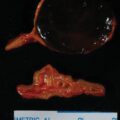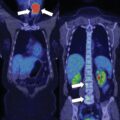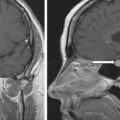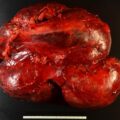Adrenocortical carcinoma (ACC) can present with overt symptoms of hormone excess (usually androgen, cortisol, or combined hypersecretion) in 30%–40% of cases. Imaging characteristics include unenhanced attenuation >20 Hounsfield units (HU), heterogeneity, and positive F-18 fluorodeoxyglucose (FDG) uptake on positron emission tomography (PET). Prognosis depends on several factors, including the European Network for the Study of Adrenal Tumours (ENSAT) stage, R0 (complete) surgical resection by an expert surgeon, and Ki-67 index <10%. Adjuvant mitotane therapy is usually recommended for patients at high risk of recurrence. Recently, the results of the ADIUVO study that included patients with ENSAT stage I or II disease and Ki-67 index <10% did not support the routine use of mitotane therapy.
Case Report
The patient was a 23-year-old woman who initially presented for evaluation of acne and hirsutism of several months, duration, as well as development of irregular menses. Workup for androgen excess was performed. Because of significantly elevated serum androgen concentrations, computed tomography (CT) abdominal imaging was performed and demonstrated a heterogeneous right adrenal mass that measured 5.5 × 5.0 × 4.2 cm. The adrenal mass had an unenhanced CT attenuation of 31 HU and contained heterogeneity with areas of necrosis on contrast-enhanced CT. Subsequent FDG-PET scan demonstrated intense FDG uptake in the adrenal mass without any other foci of activity ( Fig. 26.1 ). The patient was referred to Mayo Clinic for further management of the adrenal mass.
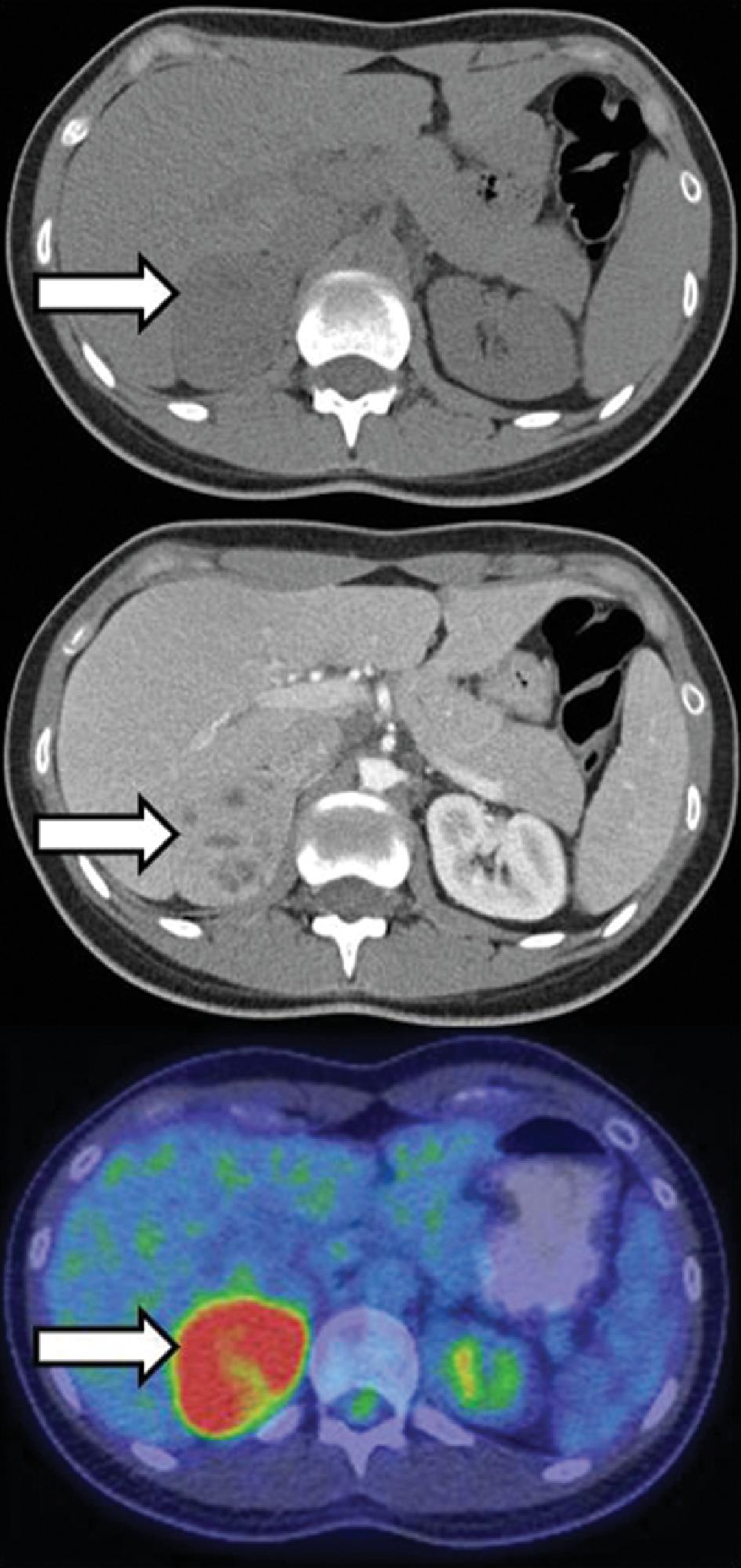
On evaluation, aside from acne and hirsutism, the patient denied any other symptoms and signs. She has not noticed cushingoid features or any changes in her blood pressure. On physical examination, her blood pressure was 124/68 mmHg and body mass index was 24.3 kg/m 2 . She had facial acne and mild facial hirsutism. Her only medication was an oral contraceptive (drospirenone-ethinyl estradiol).
INVESTIGATIONS
Laboratory evaluation showed normal levels of urinary metanephrine and normetanephrine but was positive for significant androgen excess and possible glucocorticoid autonomy (abnormal dexamethasone suppression test while on oral contraceptive) ( Table 26.1 ).
| Biochemical Test | Result | Reference Range |
| Cortisol after overnight 1-mg DST, mcg/dL | 7.1 | <1.8 |
| Cortisol, mcg/dL | 7.2 | 7–21 |
| ACTH, pg/mL | 7.5 | 7.2–63 |
| DHEA-S, mcg/dL | 1539 | 44–332 |
| Androstenedione, ng/dL | 430 | 30–200 |
| Total testosterone, ng/dL | 131 | 8–60 |
| Aldosterone, ng/dL | 21 | <21 |
| Plasma renin activity, ng/mL per hour | 5.5 | ≤0.6–3 |
| 24-Hour urine cortisol, mcg/24 h | 32 | <45 |
| 24-Hour urine metanephrine, mcg/24 h | 25 | <400 |
| 24-Hour urine normetanephrine, mcg/24 h | 144 | <900 |
Stay updated, free articles. Join our Telegram channel

Full access? Get Clinical Tree



